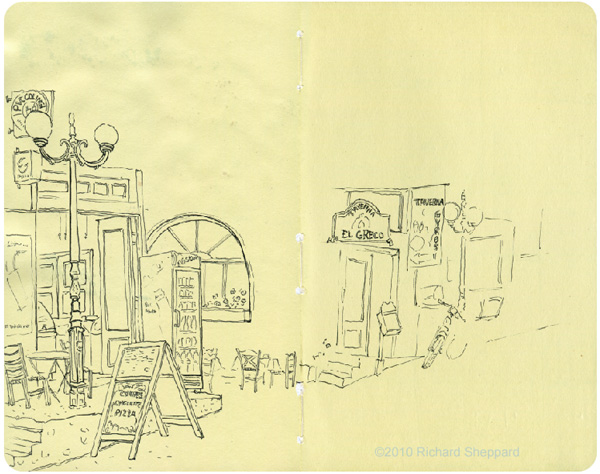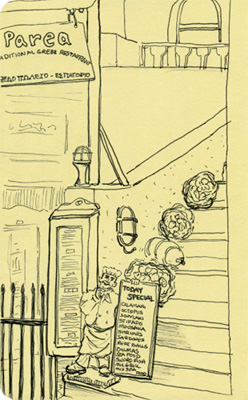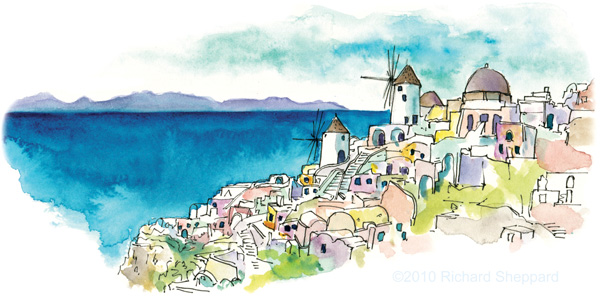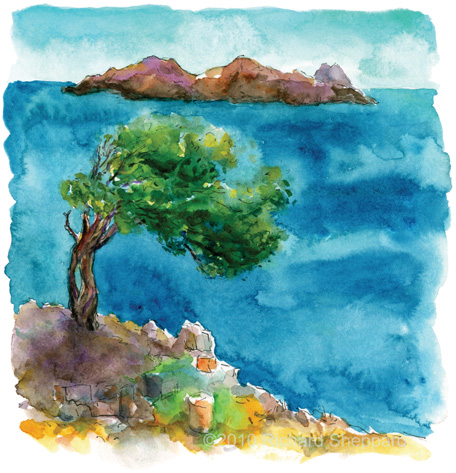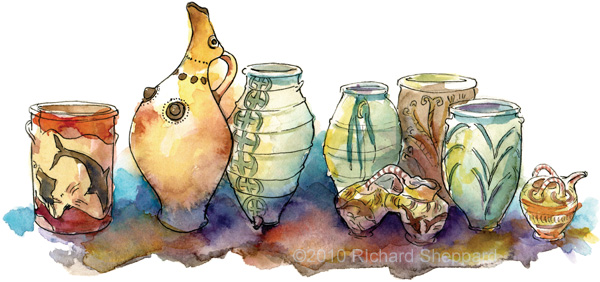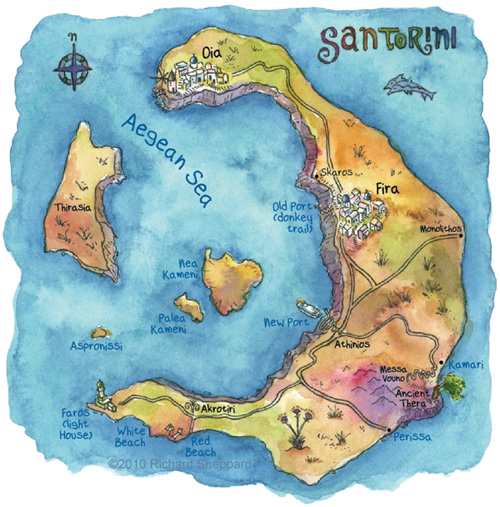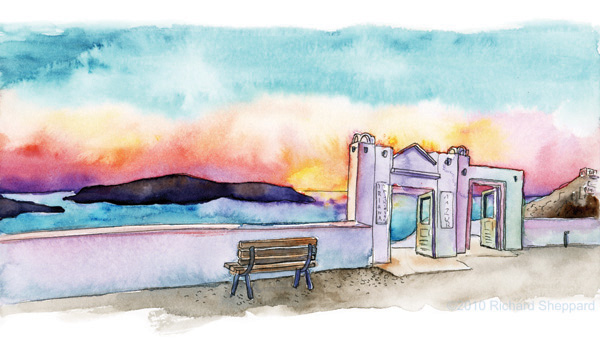(Excerpt from my book, The Artist on the Road: Impressions of Greece)
This morning, while waiting to see if this afternoon’s hydrofoil to Mykonos will sail, we go to an outdoor cafe for chocolate crepes and Greek coffee. These are not your delicate French crepes, oh no. These are Greek crepes, thick, almost pancake-like, folded into quarters and oozing with chocolate sauce. The warm chocolaty goodness melts in my mouth. I work on a sketch of the shops across the street while still enjoying the last few bites of my crepe. Our waitress, gathering our plates, smiles at me, conveying her appreciation of my sketch.
Today I’m drawing a little differently than I have been. I appreciate the fact that I’m not telling too much and leaving the rest to the imagination. It’s as if I’m drawing just the important parts, only enough to describe the scene. My touch has also lightened, leaving space between lines and allowing the drawing to breathe. It’s really a type of vignetting, and I like the new style. I’ll have to work like this more often.
